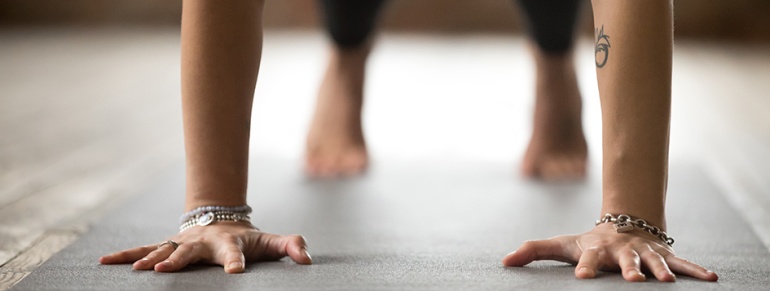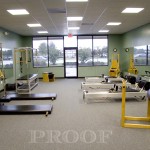- July 18th, 2018
- /
- Pilates
- /
- Pilates Tips For Your At Home Practice

Maybe it is the dog that kept you up all night barking, the chaos of getting bags or lunches together this morning, or realizing you left your coupons at home while checking out at the local grocery store. It is safe to say that life can be stressful, and we aren’t always able to make it to an in-class Pilates session. Rather than limit your stress relief to the studio, expand your routine with at-home practice.
1. Make A Plan
Similar to a sheet of repetitions you plan to achieve at the gym, document your Pilates routine with the movements you’ll perform. If you create your plan before directly starting your Pilates regimen, set a reminder for yourself to ensure you don’t skip your practice! A dedicated plan will make jumping into your at-home Pilates practice easier to begin.
2. Have A Dedicated Space
Whether it is the cleared off section of a living room floor or a rarely used guest bedroom, dedicate an area of your home to Pilates. This will help to set a routine for you as you practice within your home. When you’re finished, simply roll your mat up and return the space to everyday use.
3. Remove Distractions
The foundation of your Pilates routine should be a peaceful mind with a focus on your routine. Play calming music or shut the door for a relaxing setting. Remove loud noises, silence phone notifications, or any other distractions for an effective workout. As you begin your routine, focus on starting slowly with proper technique. Strengthen both your physical and mental health with a calm setting while performing Pilates.
4. Stay Hydrated
Generally speaking, a Pilates session is accompanied by a ton of sweating. Being hydrated is especially important for this reason. Keeping joints lubricated is critical as you’re manipulating your body through different movements. Increasing the amount of water you drink is important for eliminating toxins effectively, as well. Forgetting this tip can lead to headaches, dizziness, or muscle cramps.
5. Wear Appropriate Clothing
While it may not seem like an important Pilates tip, wearing the appropriate clothing is necessary for form control. Your clothing should be made of material that allows for stretching or various movements while still being fitted, as well. Tight-fitted clothing highlights movement and form so you can easily identify flaws in your technique. This will also prevent tangled clothes as you bend and twist throughout your routine.
Remember, Pilates should just be a piece of your well-rounded fitness plan. For more tips on healthy eating or overall wellness, refer to our Performance Pilates blog!




